

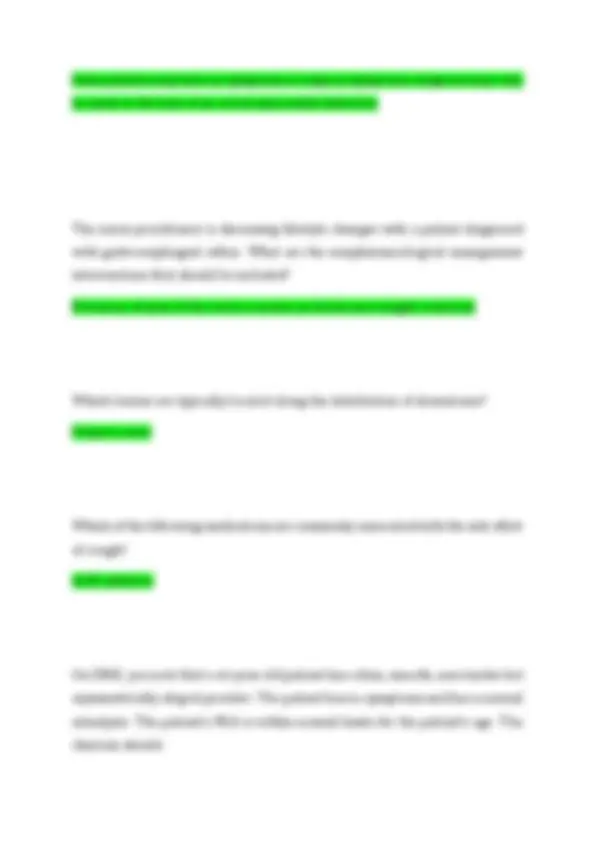

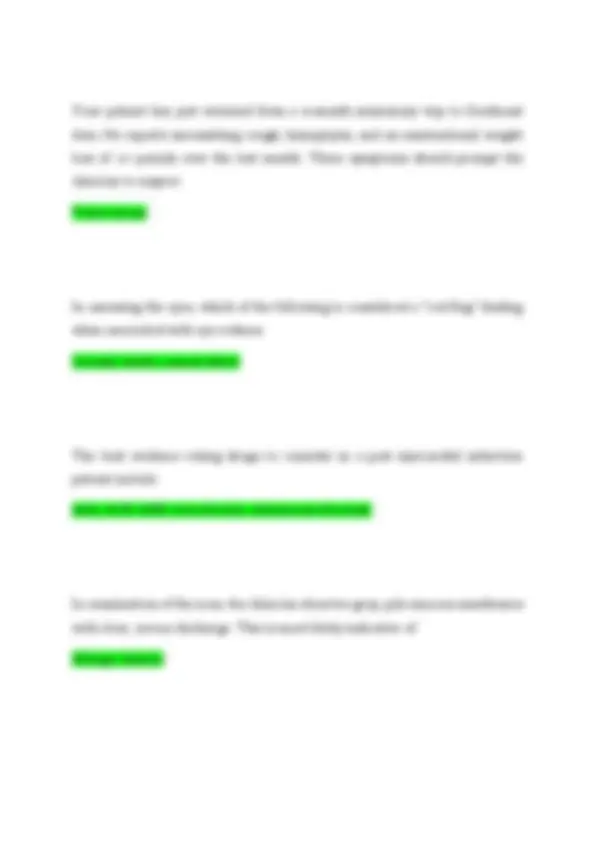
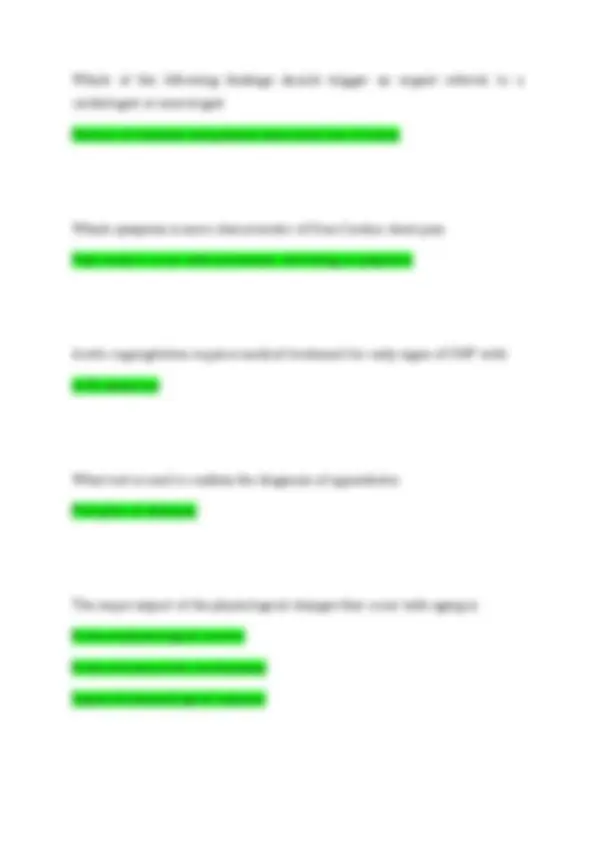
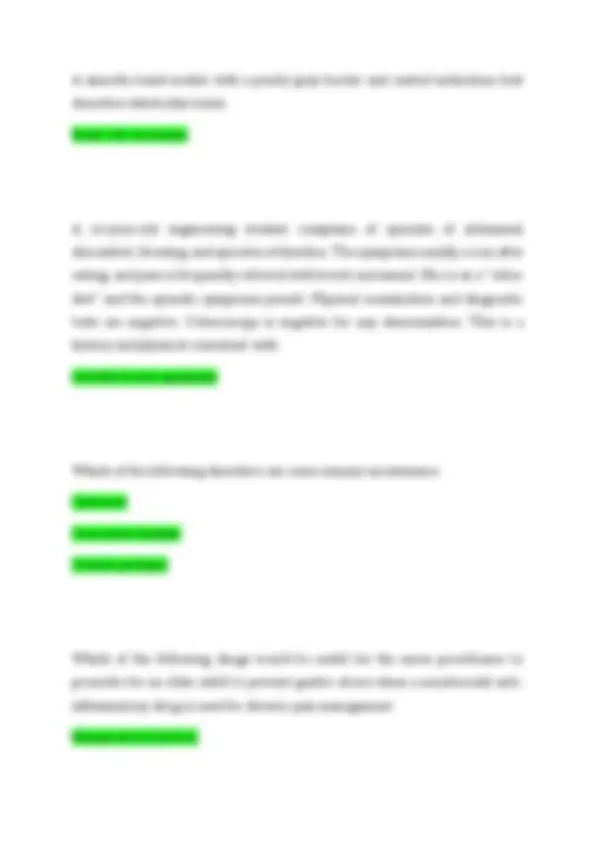
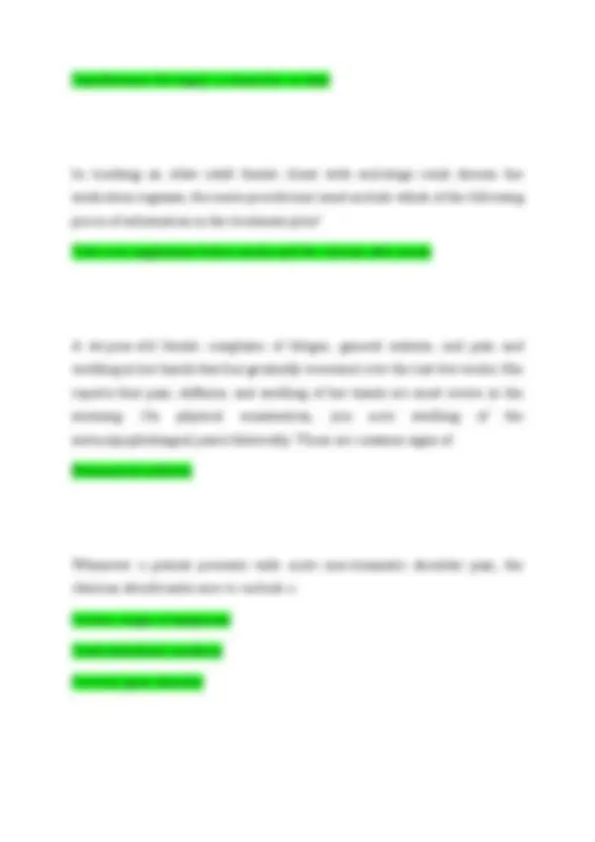
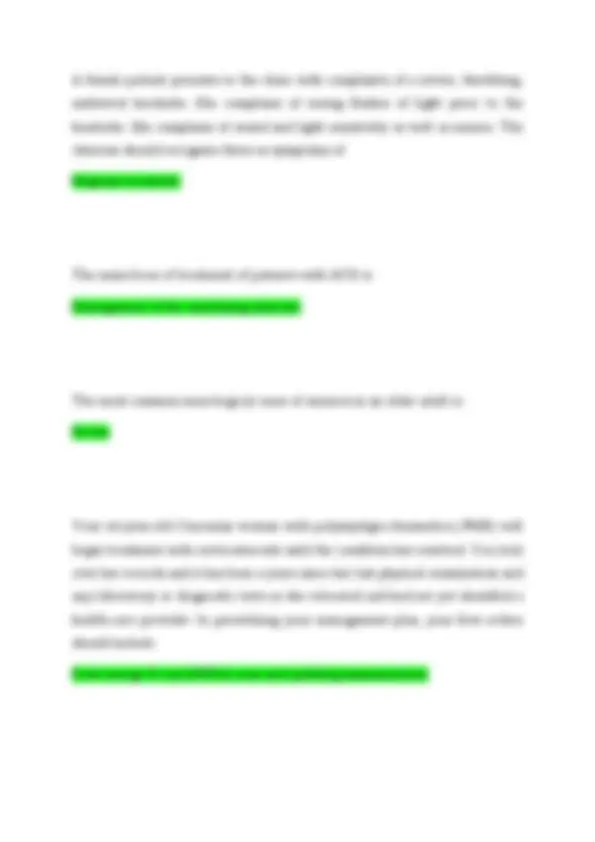
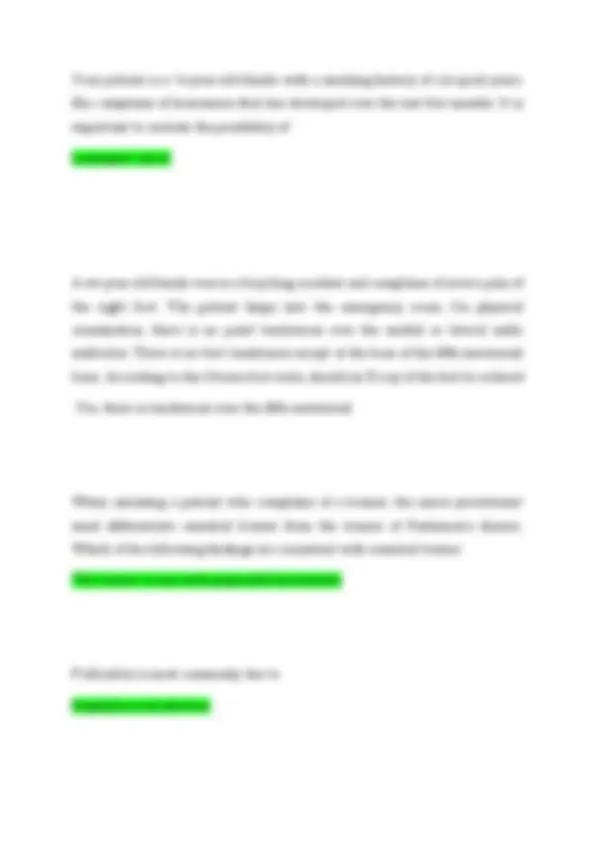
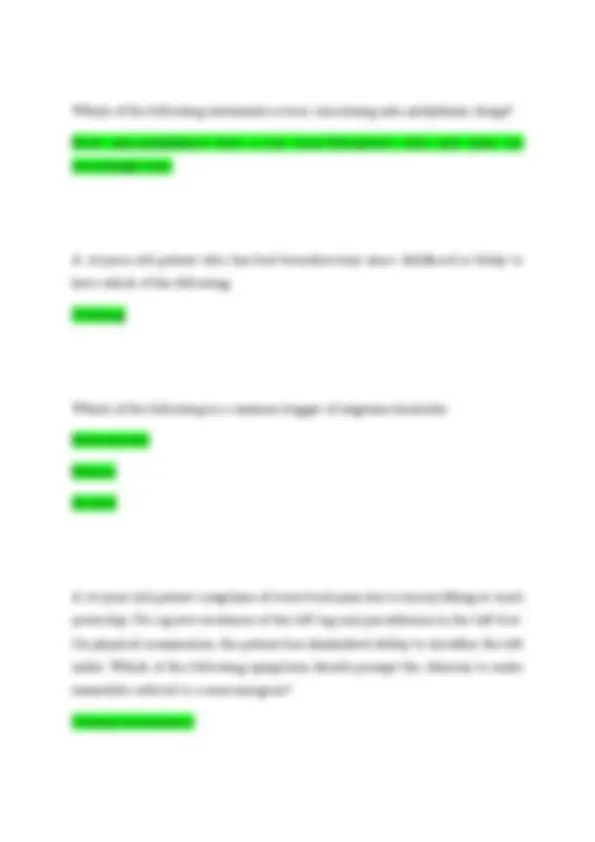
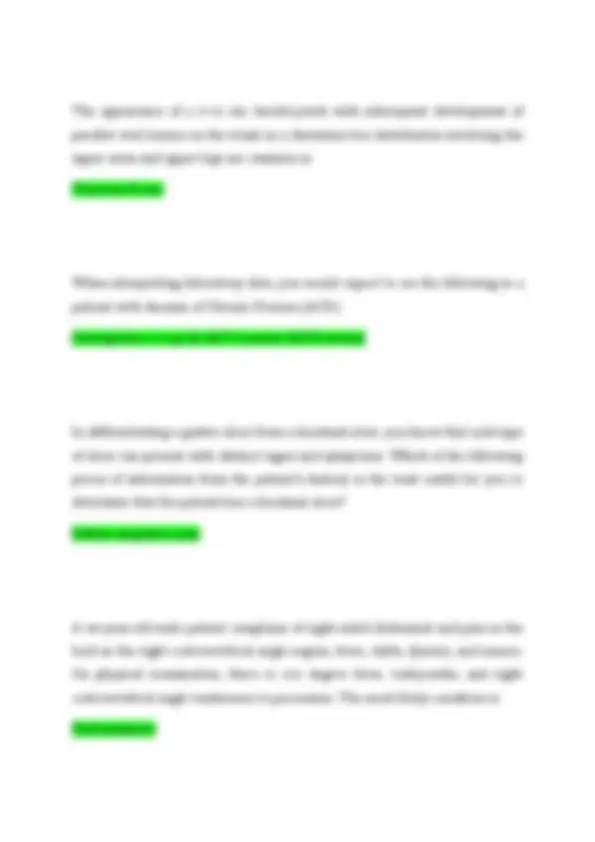
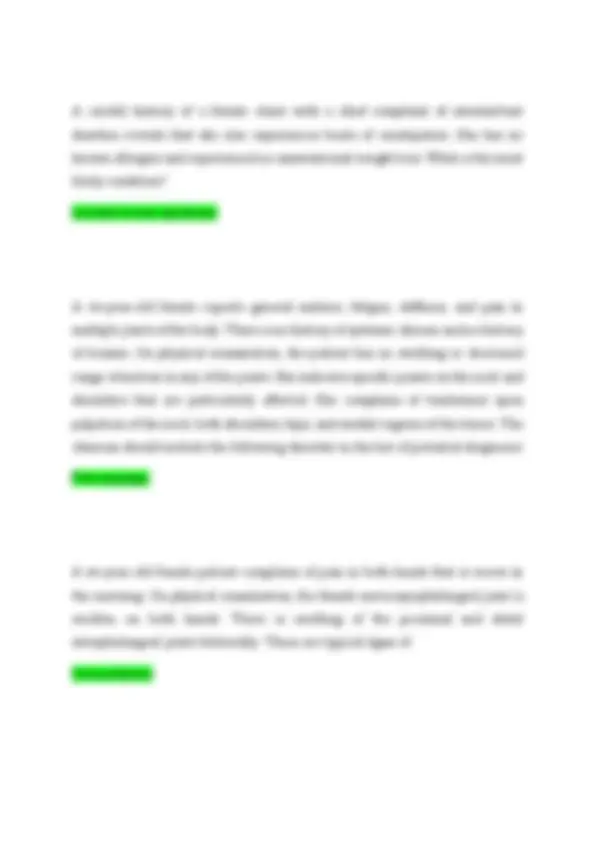
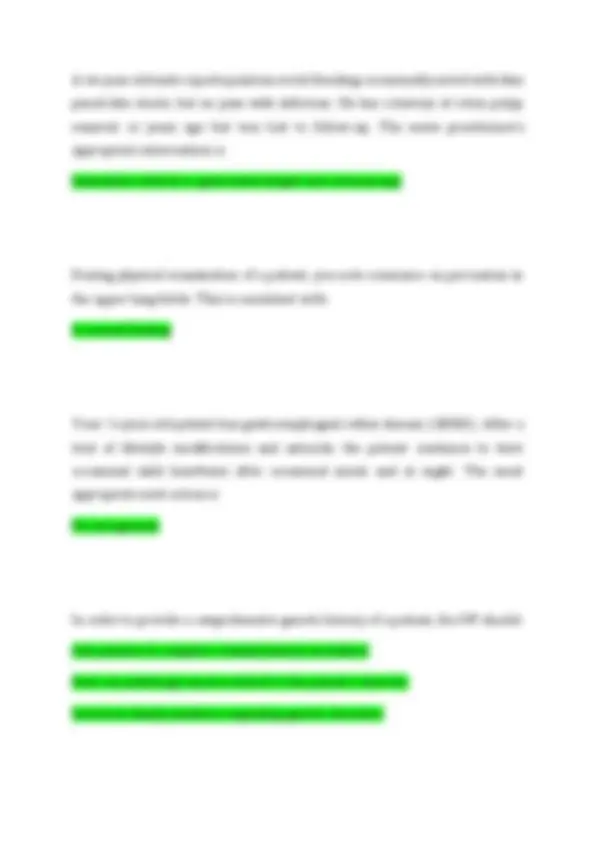
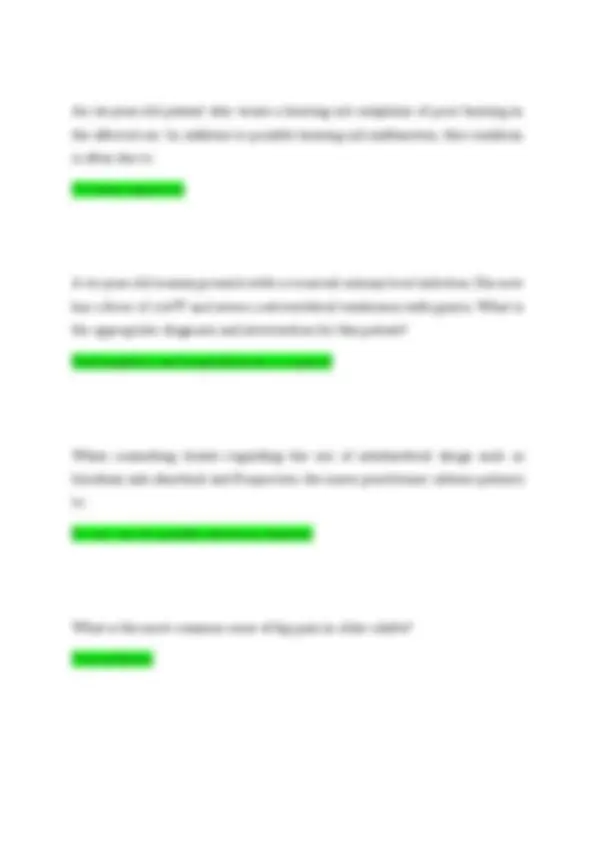
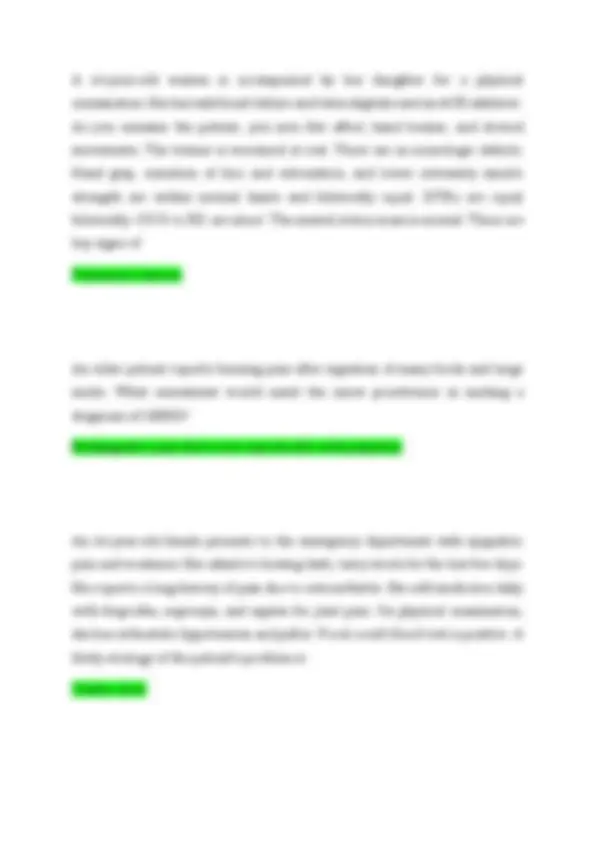
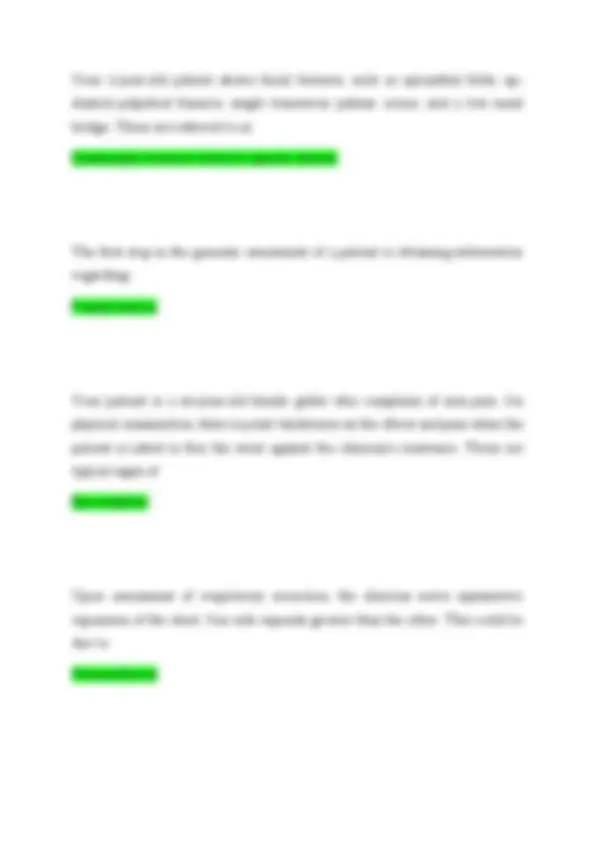
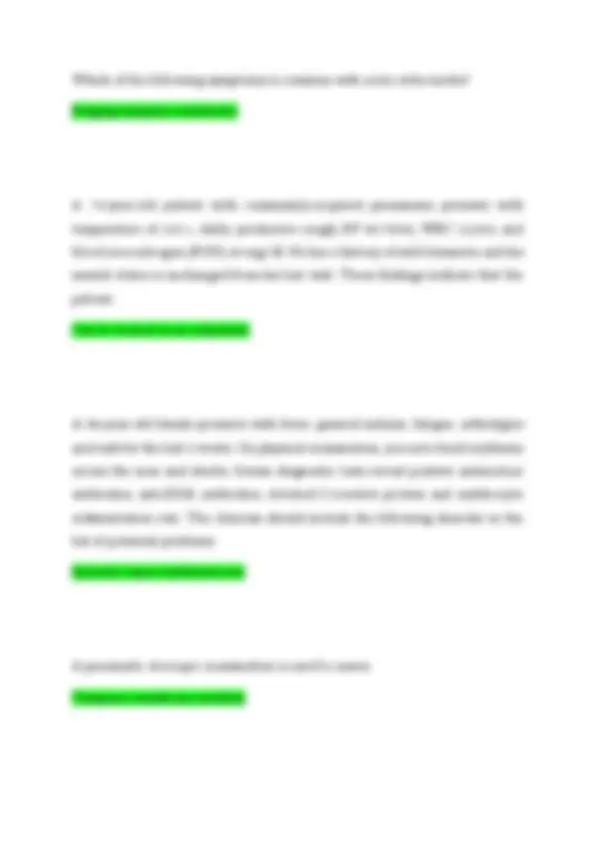

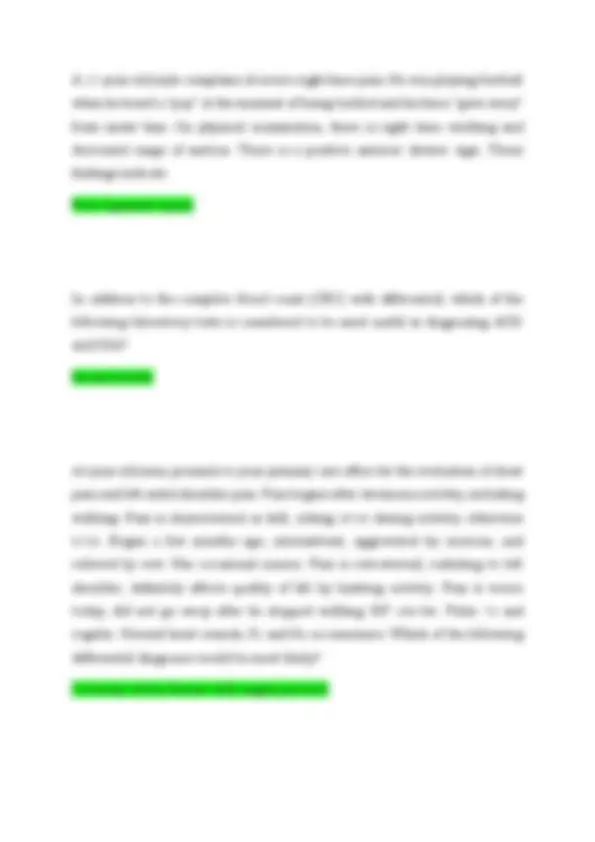
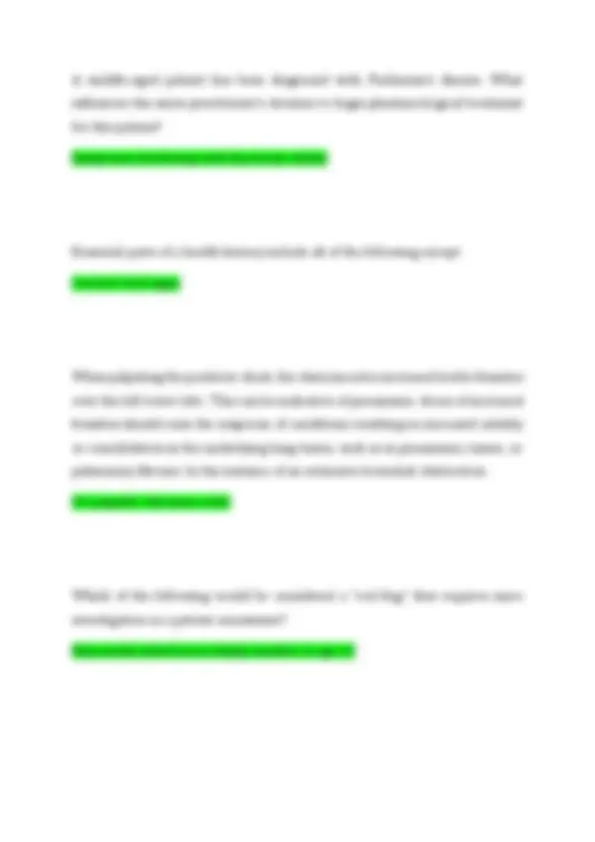
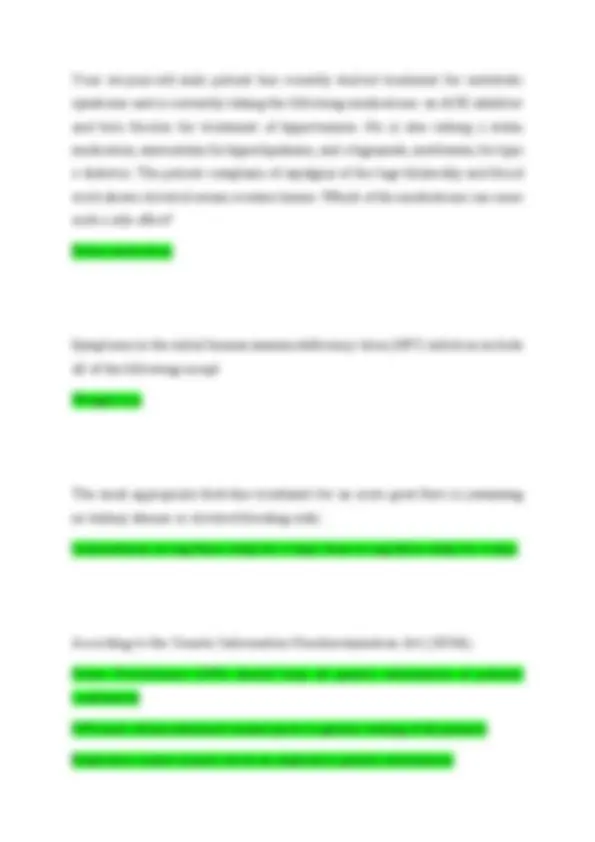
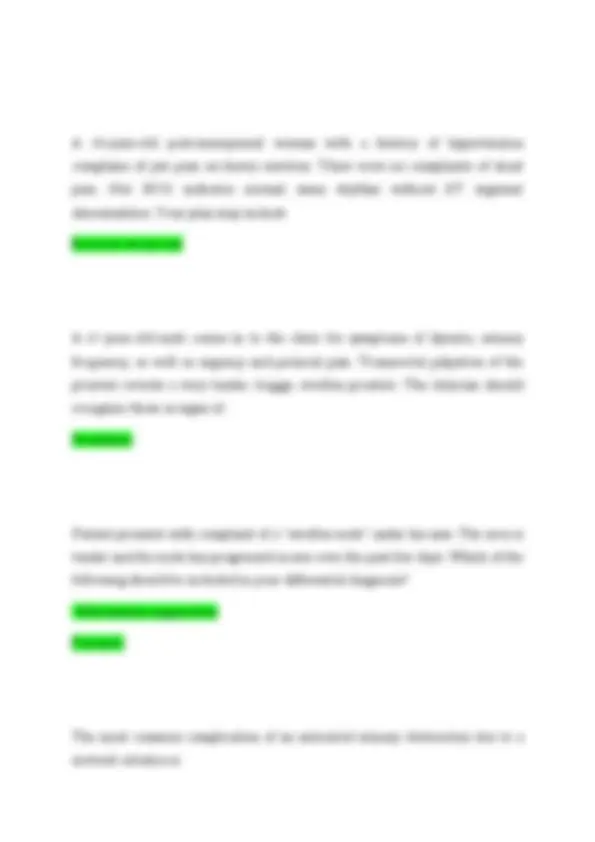
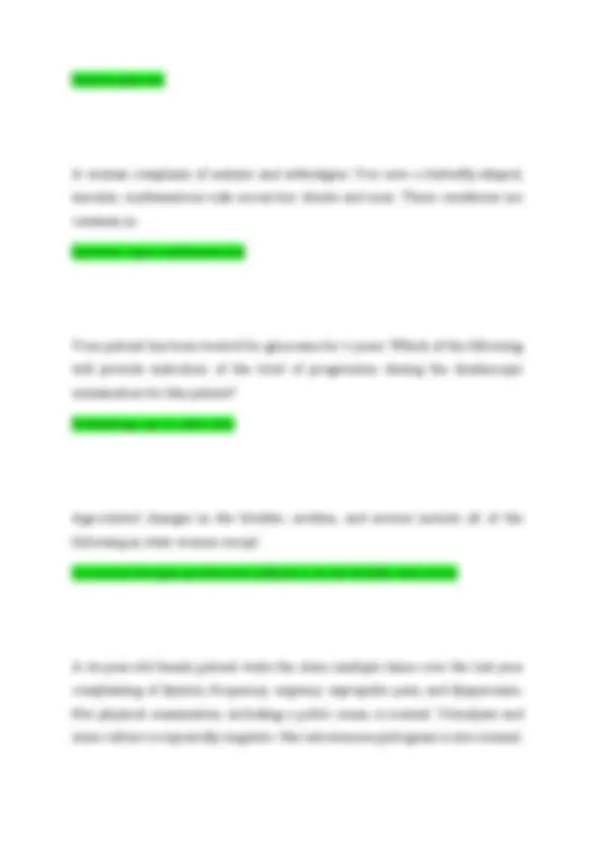
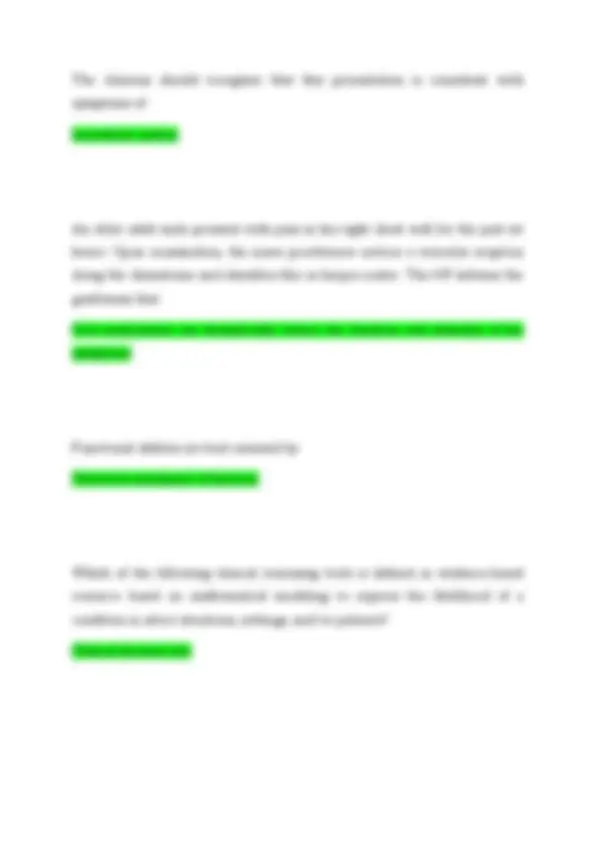
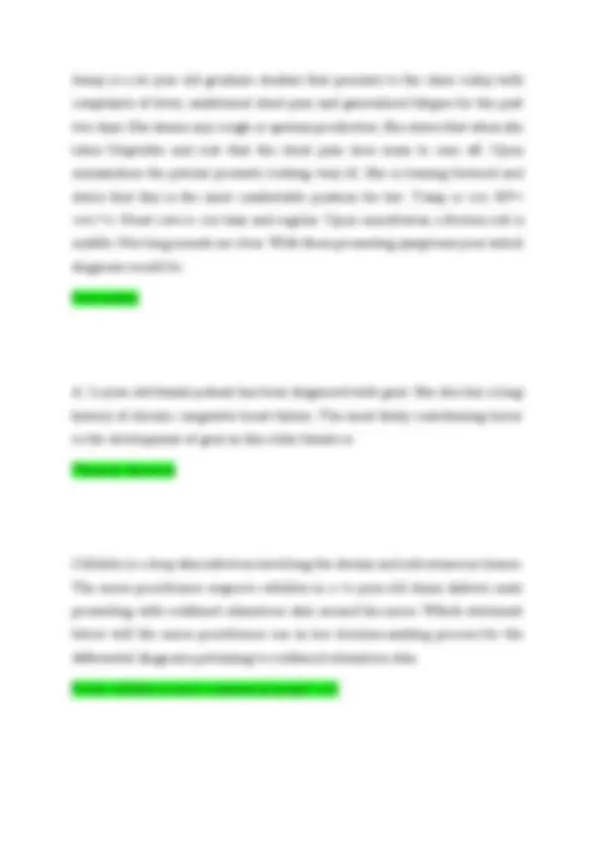
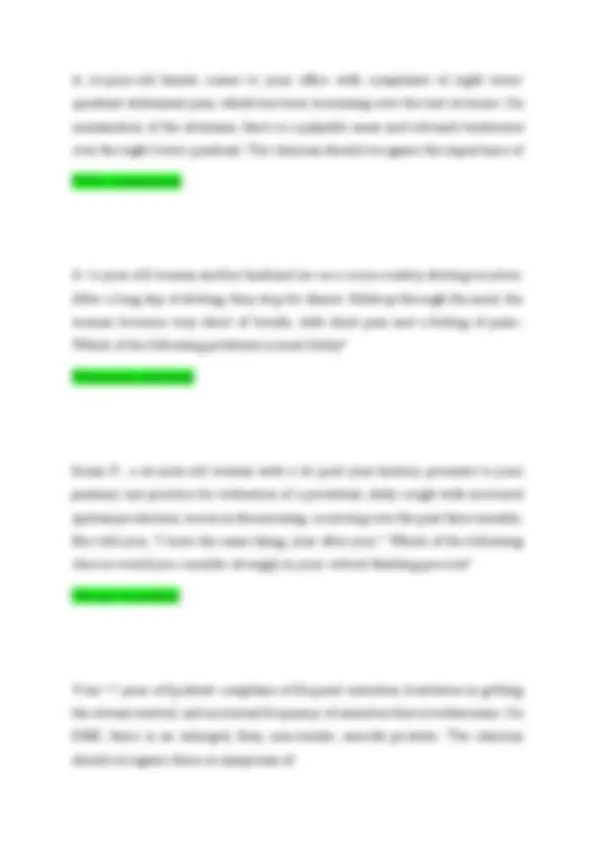

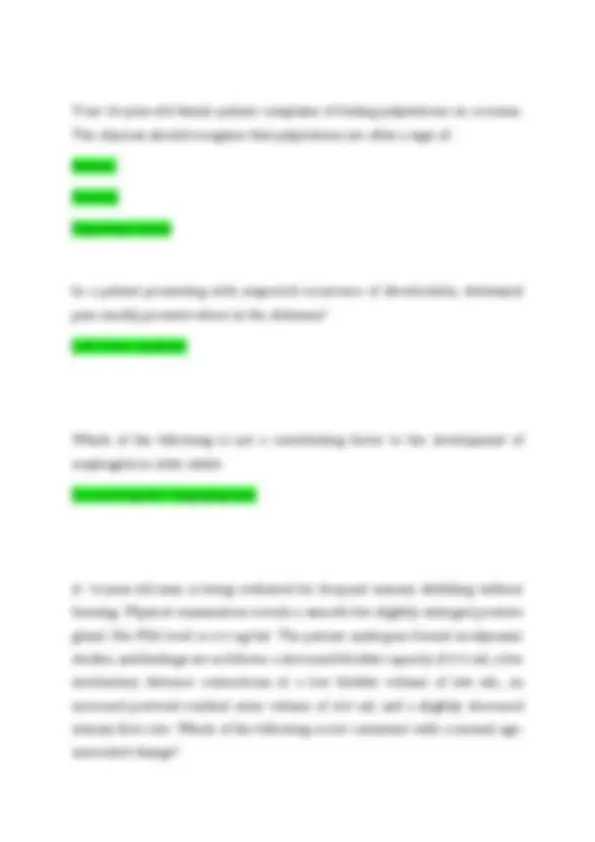
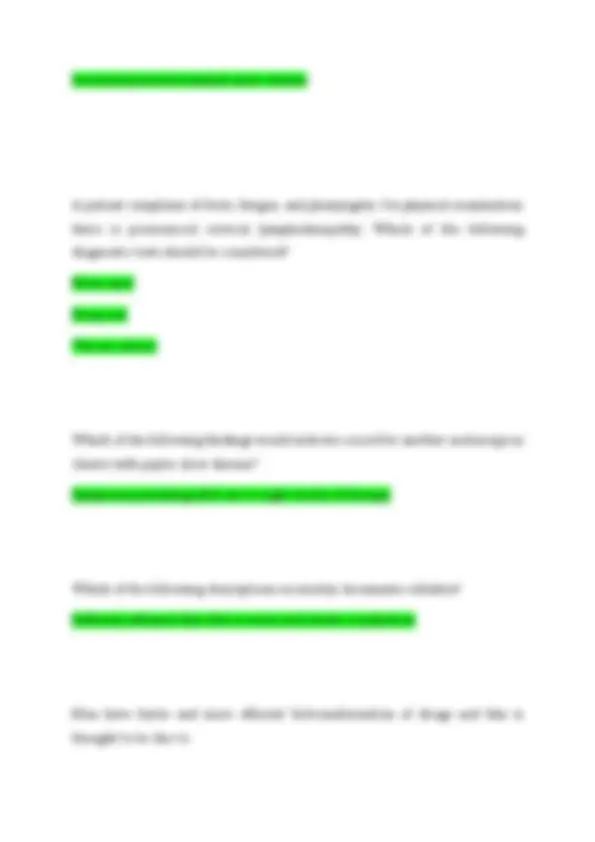
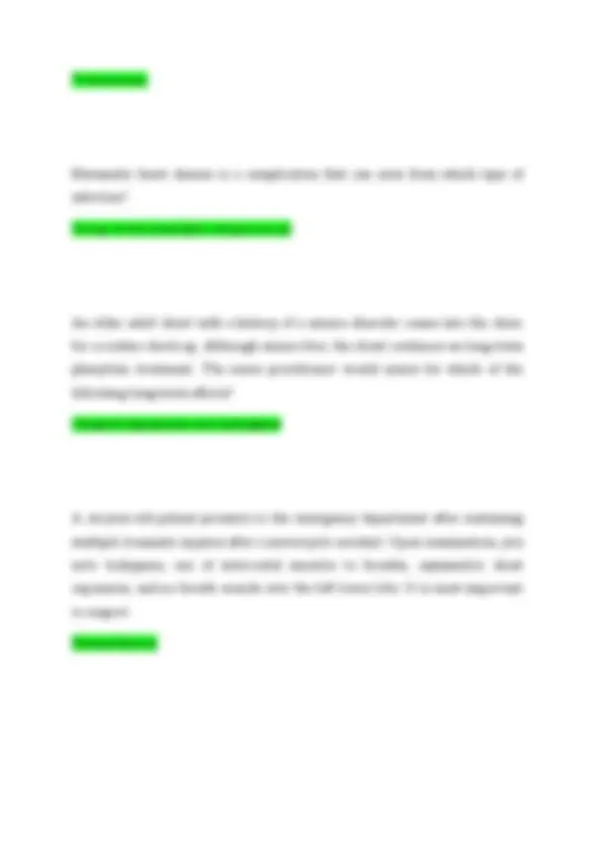
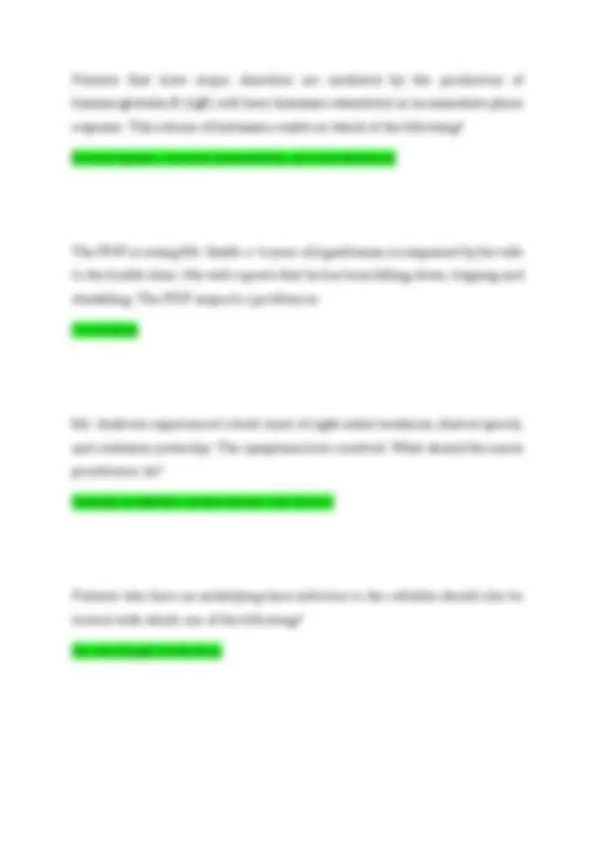
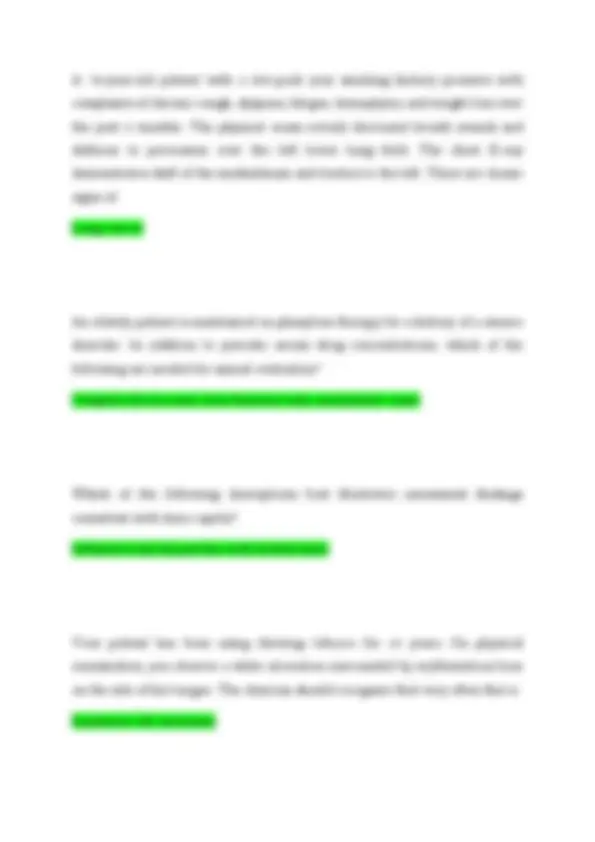
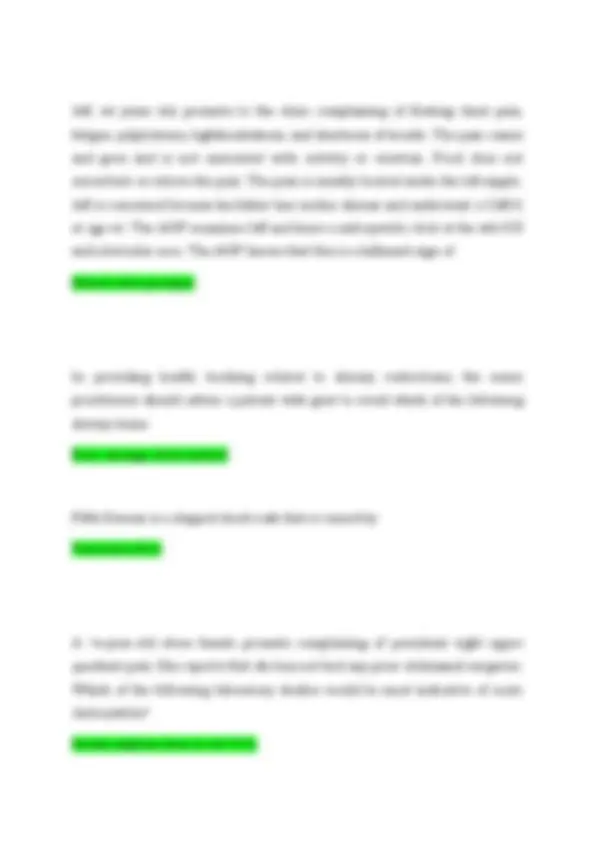

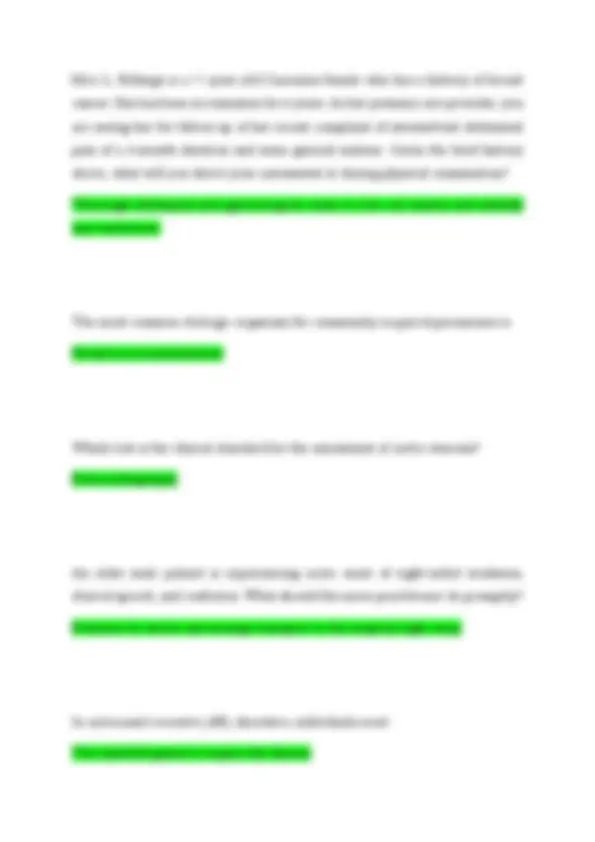
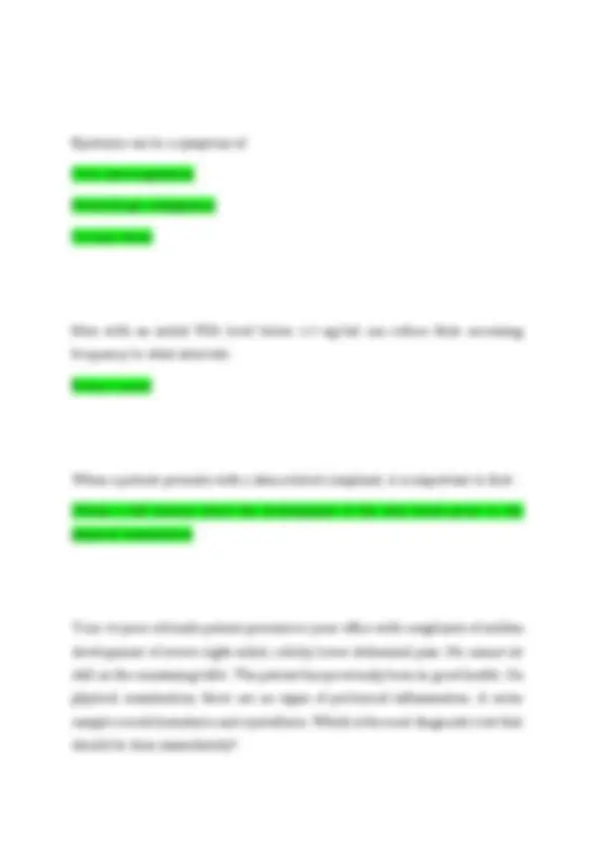
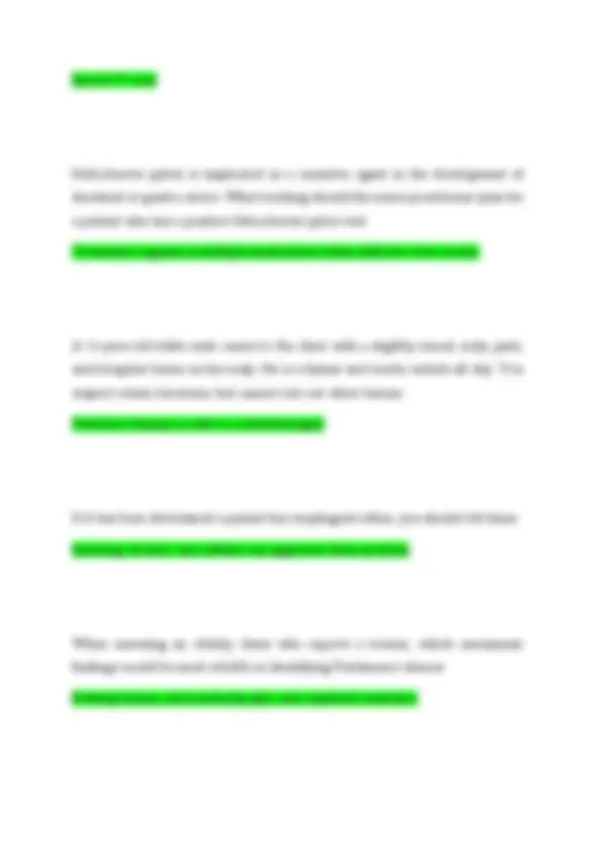
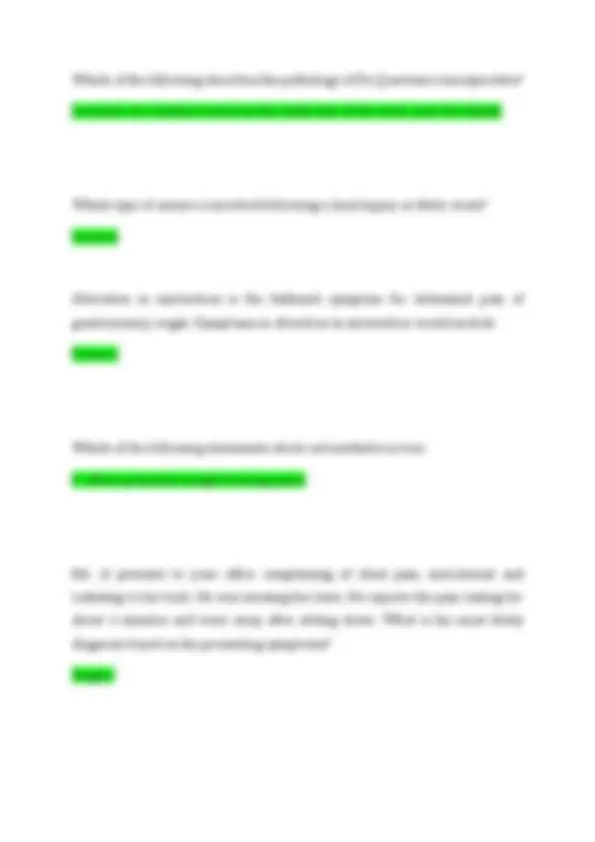
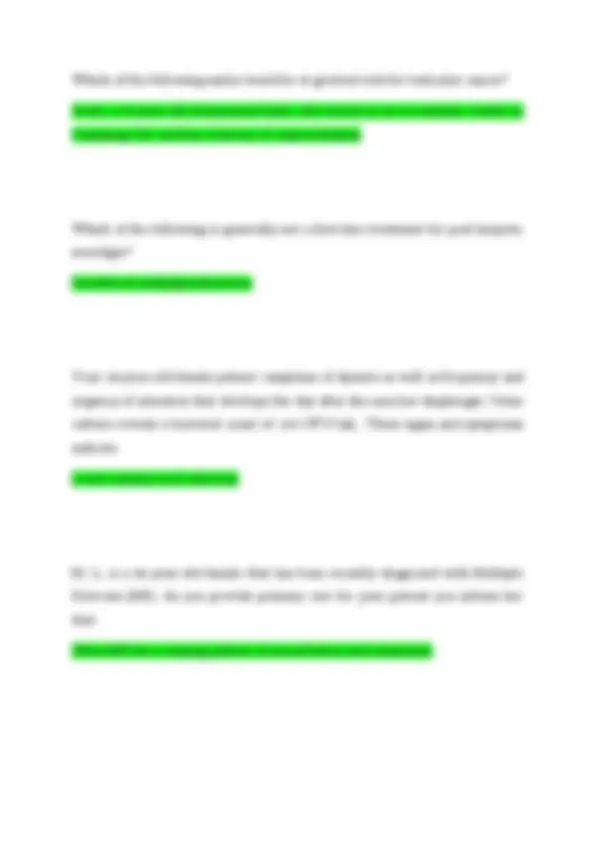
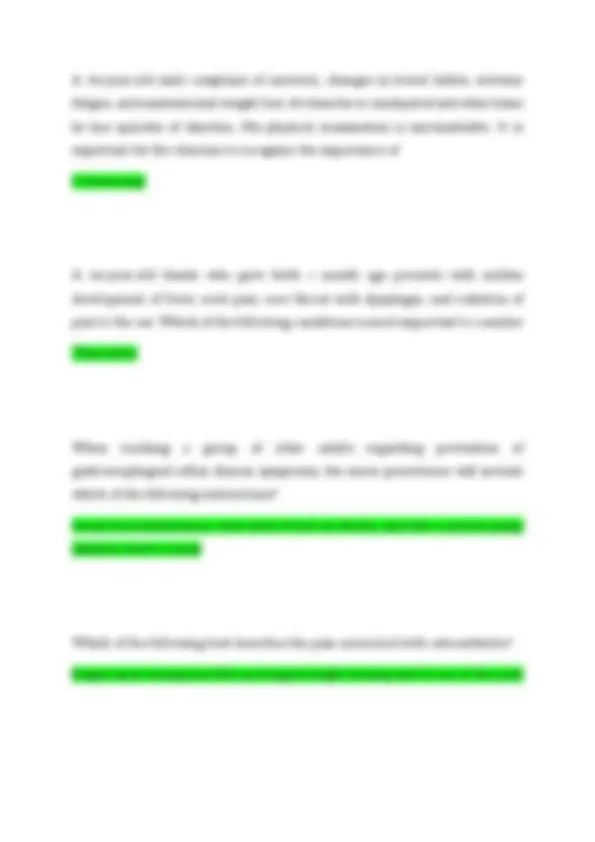
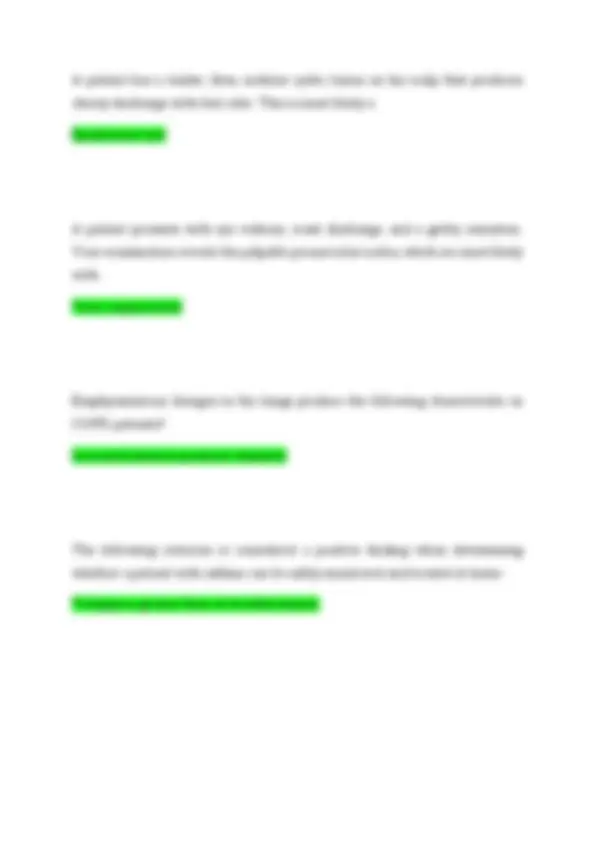


Study with the several resources on Docsity

Earn points by helping other students or get them with a premium plan


Prepare for your exams
Study with the several resources on Docsity

Earn points to download
Earn points by helping other students or get them with a premium plan
Community
Ask the community for help and clear up your study doubts
Discover the best universities in your country according to Docsity users
Free resources
Download our free guides on studying techniques, anxiety management strategies, and thesis advice from Docsity tutors
NSG5003 | QUESTIONS AND ANSWERS | 2025-2026 | GRADED A+
Typology: Exams
1 / 49

This page cannot be seen from the preview
Don't miss anything!










































It is important to not dilate the eye if ____ is suspected. Acute closed-angle glaucoma An 18-year-old female patient presents with repeated urinary tract infections. She has no risk factors in her history, and her physical examination is unremarkable. She also has a normal pelvic exam. Intravenous pyelogram The pathophysiological hallmark of ACD is: Impaired ability to use iron stores Which of the following is the most important question to ask during cardiovascular health history? Sudden death of a family member A 26-year-old, non-smoker, male presented to your clinic with SOB with exertion. This could be due to
Alpha-1 deficiency Which of the following dermatological conditions results from reactivation of the dormant varicella virus? Herpes zoster Mr. Jones is a 68-year-old retired Air Force pilot that has been diagnosed with prostate cancer in the past week. He has never had a surgical procedure in his life and seeks clarification on the availability of treatments for prostate cancer. He asks the nurse practitioner to tell him the side effects of a radical prostatectomy. Which of the following is not a potential side effect of this procedure? Selected low back pain Presbycusis is the hearing impairment that is associated with Physiologic aging Asymptomatic 1+ bacteriuria is found in a nursing home resident with an indwelling catheter. The nurse practitioner's initial intervention includes Assessing resident's cognitive status and last change of the catheter/bag
Some patients may have no symptoms or atypical symptoms; diagnosis may only be made at the time of an actual myocardial infarction The nurse practitioner is discussing lifestyle changes with a patient diagnosed with gastroesophageal reflux. What are the nonpharmacological management interventions that should be included? Elevation of head of the bed 4-6 inches on blocks and weight reduction Which lesions are typically located along the distribution of dermatome? Herpes zoster Which of the following medications are commonly associated with the side effect of cough? ACE inhibitor On DRE, you note that a 45-year-old patient has a firm, smooth, non-tender but asymmetrically shaped prostate. The patient has no symptoms and has a normal urinalysis. The patient's PSA is within normal limits for the patient's age. The clinician should:
Recognize this as a normal finding that requires periodic follow up Your patient complains of a feeling of heaviness in the lower legs daily. You note varicosities, edema, and dusky color of both ankles and feet. Which of the following is the most likely cause for these symptoms Venous insufficiency The most common cause of eye redness is: Conjunctivitis The aging process causes what normal physiological changes in the heart? The heart valve thickens and becomes rigid, secondary to fibrosis and sclerosis Ms. Smith, 37-year-old, comes to the clinic today complaining of dull, throbbing bilateral headaches almost every evening. You suspect she is experiencing tension headaches
In examining the mouth of an older adult with a history of smoking, the nurse practitioner finds a suspicious oral lesion. The patient has been referred for a biopsy to be sent for pathology. Which is the most common oral precancerous lesion Leukoplakia A cough is described as chronic if it has been present for 8 weeks or more The first assessment to complete related to the eyes is Visual acuity The Mini-Cog is a short screening tool used to assess cognition. Which of the following statements pertaining to the test is a true statement A score of 0-2 is a positive screen for dementia A woman with an X-linked dominant disorder will Transmit the disorder to 50% of her offspring (male or female)
Your patient has just returned from a 6-month missionary trip to Southeast Asia. He reports unremitting cough, hemoptysis, and an unintentional weight loss of 10 pounds over the last month. These symptoms should prompt the clinician to suspect Tuberculosis In assessing the eyes, which of the following is considered a "red flag" finding when associated with eye redness Grossly visible corneal defect The best evidence rating drugs to consider in a post myocardial infarction patient include ASA, ACE/ARB, beta-blocker, aldosterone blockade In examination of the nose, the clinician observes gray, pale mucous membranes with clear, serous discharge. This is most likely indicative of Allergic rhinitis
A smooth round nodule with a pearly gray border and central induration best describes which skin lesion Basal cell carcinoma A 20 - year-old engineering student complains of episodes of abdominal discomfort, bloating, and episodes of diarrhea. The symptoms usually occur after eating, and pain is frequently relieved with bowel movement. She is on a "celiac diet" and the episodic symptoms persist. Physical examination and diagnostic tests are negative. Colonoscopy is negative for any abnormalities. This is a history and physical consistent with: Irritable bowel syndrome Which of the following disorders can cause urinary incontinence Cystocele Overactive bladder Uterine prolapse Which of the following drugs would be useful for the nurse practitioner to prescribe for an older adult to prevent gastric ulcers when a nonsteroidal anti- inflammatory drug is used for chronic pain management Misoprostol (Cytotec)
Which of the following details are NOT considered while staging asthma Long-acting beta agonist usage A 66-year-old patient presents to the clinic complaining of dyspnea and wheezing. The patient reports a smoking history of 2 packs of cigarettes per day since age 16. This would be recorded in the chart as 100 - pack years A clinical clue for suspected renal artery stenosis would be Rising BUN level with normal creatinine level What is the most common valvular heart disease in the older adult Aortic stenosis The cytochrome p system involves enzymes that are generally Inhibited or induced by drugs
Ciprofloxacin 500 mg Q 12 hours for 14 days In teaching an older adult female client with end-stage renal disease her medication regimen, the nurse practitioner must include which of the following pieces of information in the treatment plan? Take iron supplement before meals and the calcium after meals A 46-year-old female complains of fatigue, general malaise, and pain and swelling in her hands that has gradually worsened over the last few weeks. She reports that pain, stiffness, and swelling of her hands are most severe in the morning. On physical examination, you note swelling of the metacarpophalangeal joints bilaterally. These are common signs of Rheumatoid arthritis Whenever a patient presents with acute non-traumatic shoulder pain, the clinician should make sure to exclude a: Cardiac origin of symptoms Gastrointestinal condition Cervical spine disorder
A female patient presents to the clinic with complaints of a severe, throbbing, unilateral headache. She complains of seeing flashes of light prior to the headache. She complains of sound and light sensitivity as well as nausea. The clinician should recognize these as symptoms of Migraine headache The main focus of treatment of patients with ACD is Management of the underlying disorder The most common neurological cause of seizures in an older adult is: Stroke Your 63-year-old Caucasian woman with polymyalgia rheumatica (PMR) will begin treatment with corticosteroids until the condition has resolved. You look over her records and it has been 2 years since her last physical examination and any laboratory or diagnostic tests as she relocated and had not yet identified a health-care provider. In prioritizing your management plan, your first orders should include Dual-energy X-ray (DEXA) scan and updating immunizations
What kind of lesions are caused by the herpes simplex virus? Vesicles A 65-year-old male complains of a headache that feels "like a knife is cutting into his head." He also reports feeling right-sided scalp and facial pain and "seeing double" at times. He has a history of hypertension and hyperlipidemia. His medications include beta blocker, statin drug, and an ACE inhibitor. On physical examination, you note palpable tenderness over the right side of the forehead. There are no neurological deficits. Vision is 20/20 with lenses. No weakness of extremities. CN II to XII are intact. The history corresponds to which of the following disorders Giant cell arteritis Which of the following conditions is the most common cause of nausea, vomiting, and diarrhea Viral gastroenteritis The nurse practitioner orders bilateral wrist X-rays on a 69-year-old gentleman complaining of pain in both wrists for the past 6 weeks not related to any known trauma. The nurse practitioner suspects elderly onset rheumatoid arthritis. The
initial radiographic finding in a patient with elderly onset rheumatoid arthritis would be Soft tissue swelling A common auscultatory finding in advanced CHF is S3 gallop rhythm The three cardinal features of Parkinson's disease are: Bradykinesia, rigidity, and tremor In AR disorders, carriers have One copy of a gene mutation but not the disease A 75-year-old patient complains of pain and paresthesias in the right foot that worsens with exercise and is relieved by rest. On physical examination you note pallor of the right foot, capillary refill of 4 seconds in the right foot, +1 dorsalis pedis pulse in the right foot, and +2 pulse in left foot. Which of the following is a likely cause of the signs and symptoms? Arterial insufficiency
The appearance of a 2-10 cm. herald patch with subsequent development of parallel oval lesions on the trunk in a christmas tree distribution involving the upper arms and upper legs are common in Pityriasis Rosea When interpreting laboratory data, you would expect to see the following in a patient with Anemia of Chronic Disease (ACD): Hemoglobin <12 g/dl, MCV normal, MCH normal In differentiating a gastric ulcer from a duodenal ulcer, you know that each type of ulcer can present with distinct signs and symptoms. Which of the following pieces of information from the patient's history is the least useful for you to determine that the patient has a duodenal ulcer? Diffuse epigastric pain A 43-year-old male patient complains of right-sided abdominal and pain in the back in the right costovertebral angle region, fever, chills, dysuria, and nausea. On physical examination, there is 102 degree fever, tachycardia, and right costovertebral angle tenderness to percussion. The most likely condition is Pyelonephritis
A careful history of a female client with a chief complaint of intermittent diarrhea reveals that she also experiences bouts of constipation. She has no known allergies and experienced no unintentional weight loss. What is the most likely condition? Irritable bowel syndrome A 33-year-old female reports general malaise, fatigue, stiffness, and pain in multiple joints of the body. There is no history of systemic disease and no history of trauma. On physical examination, the patient has no swelling or decreased range of motion in any of the joints. She indicates specific points on the neck and shoulders that are particularly affected. She complains of tenderness upon palpation of the neck, both shoulders, hips, and medial regions of the knees. The clinician should include the following disorder in the list of potential diagnoses Fibromyalgia A 60-year-old female patient complains of pain in both hands that is worse in the morning. On physical examination, the thumb metacarpophalangeal joint is swollen on both hands. There is swelling of the proximal and distal interphalangeal joints bilaterally. These are typical signs of: Osteoarthritis